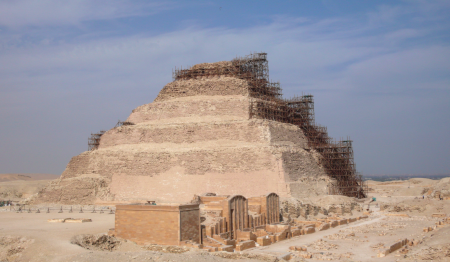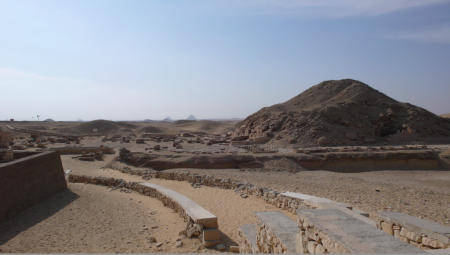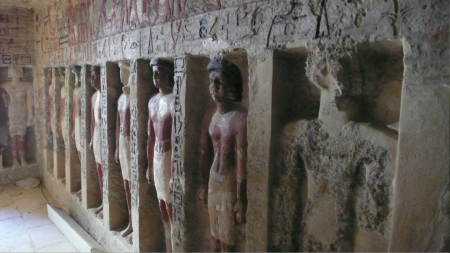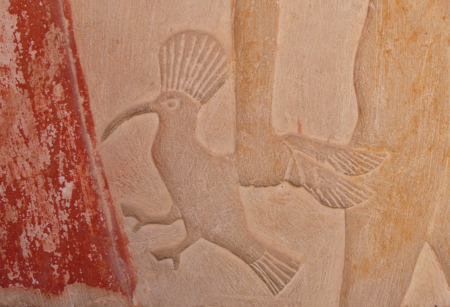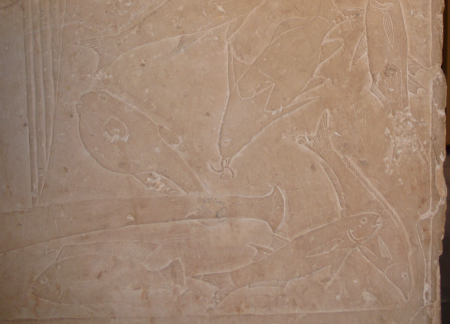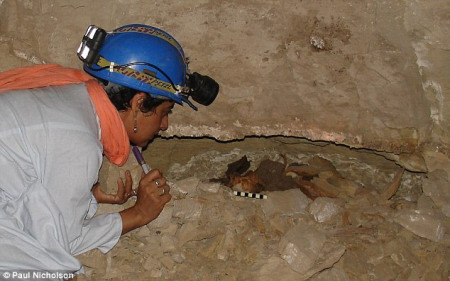A Day at Saqqara
Visited Saqqara today, which was intensely quiet and remote in contrast to Cairo which was once again undergoing rioting in the streets on Friday afternoon. Void of tourists, save for a busload of locals visiting the site, the Step Pyramid is overwhelmed by scaffolding at the moment. Built by Djoser in the 3rd Dynasty, it is the oldest complete stone building known in history, and was the site of non-royal burials and cult ceremonies for more than 3,000 years.
Within the numerous tombs, one finds fantastic artwork including River Nile scenes, animals, and fish.
During routine excavations in 2011 at the dog catacomb in Saqqara necropolis, an excavation team led by Salima Ikram—scientific consultant on Ancient Egypt’s Wildlife; AUC Press Nature Foldout—and an international team of researchers led by Paul Nicholson of Cardiff University, uncovered almost eight million animal mummies at the burial site.
“We are recording the animal bones and the mummification techniques used to prepare the animals,” said Ikram. “In doing so, we hope to identify the dog breeds present at the site. Thus far, our bone measurements indicate that there are different breeds that were mummified there.” The mummified animals at Saqqara are not limited to canines. “There are cat and mongoose remains in the deposit,” explained Ikram. “We are trying to understand how this fits religiously with the cult of Anubis, to whom the catacomb is dedicated.”
For Ikram, one of the world’s preeminent scholars in the field of mummification with a specialization in archaeozoology, the study of animal mummies offers deep insights into ancient Egyptian culture. “Animal mummies are really manifestations of daily life –– pets, food, death, religion and technology. They cover everything the Egyptians were concerned with,” said Ikram.
The dog catacombs research at Saqqara, funded by National Geographic, is one of several archaeological field projects in which Ikram is involved. She directed the Animal Mummy Project at the Egyptian Museum, resurrecting a neglected exhibition that first caught her attention when she visited the museum as a child.
http://www.aucegypt.edu/news/Pages/NewsRelease.aspx?rid=337
Filed under: Related Stories & Photos









